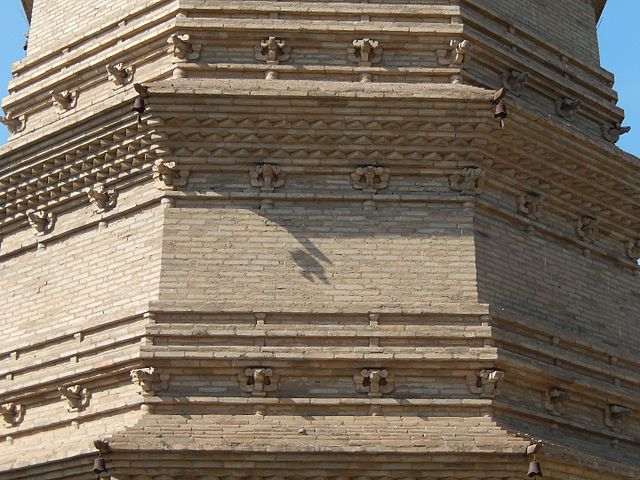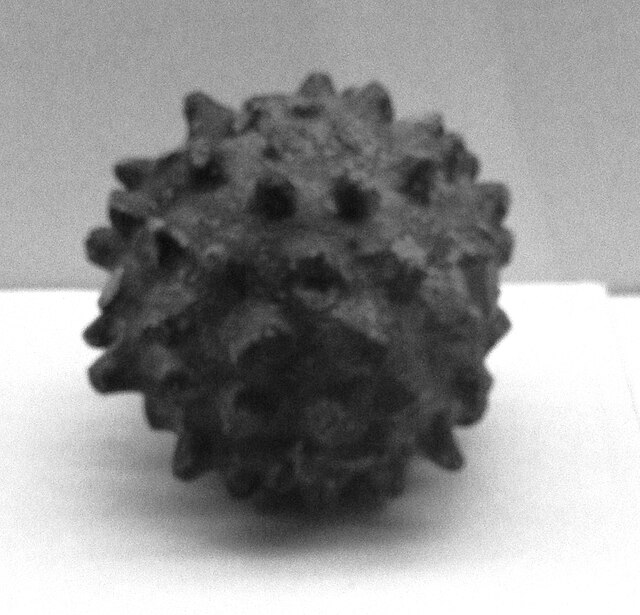The Hongfo Pagoda, meaning 'Grand Buddha Pagoda', is an octagonal brick pagoda located in Helan County, just north of Yinchuan city, in Ningxia, China. The pagoda was built during the Western Xia (1038–1227), and when it was renovated in 1990 a number of Western Xia statues and printed texts were discovered.
Hongfo Pagoda in Helan County
Detail of the second storey of the bottom section
Woodblock for the Tangut translation of the Shì móhēyǎn lùn 釋摩訶衍論 [N12·019]
Statue of an arhat
The Western Xia or the Xi Xia (Chinese: 西夏; pinyin: Xī Xià; Wade–Giles: Hsi1 Hsia4), officially the Great Xia (大夏; Dà Xià; Ta4 Hsia4), also known as the Tangut Empire, and known as Mi-nyak to the Tanguts and Tibetans, was a Tangut-led Buddhist imperial dynasty of China that existed from 1038 to 1227. At its peak, the dynasty ruled over modern-day northwestern China, including parts of Ningxia, Gansu, eastern Qinghai, northern Shaanxi, northeastern Xinjiang, and southwest Inner Mongolia, and southernmost Outer Mongolia, measuring about 800,000 square kilometres (310,000 square miles).
Xixia stone inscriptions
Western Xia painting on silk depicting the Daoist deity Emperor Xuanwu, discovered in the Hongfo Pagoda in 1990
Painting of a warrior from a late Western Xia tomb in Gansu
Western Xia explosive caltrop



![Woodblock for the Tangut translation of the Shì móhēyǎn lùn 釋摩訶衍論 [N12·019]](https://upload.wikimedia.org/wikipedia/commons/thumb/7/7c/Hongfo_Pagoda_woodblock_B.jpg/640px-Hongfo_Pagoda_woodblock_B.jpg)




